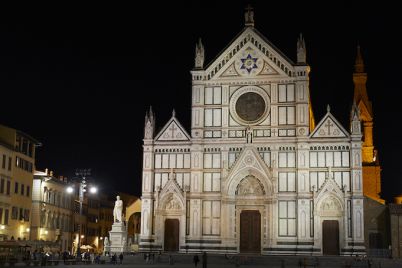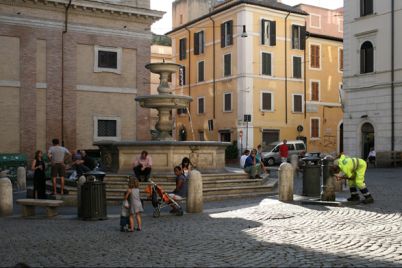A cross between the brash New York huckster and the fun-loving Parisian artist, Montreal is the entrepreneurial designer. It’s the only city in North America with a commission to encourage the development of the design industry, which has been recognized as Montreal’s leading cultural sector. Design permeates Montreal’s living environment, cultural expression, and identity to such an extent that in 2006, it was designated a UNESCO “City of Design”.
Always a frontrunner in the most liveable cities ratings, Montreal has ambitions to become “one of the most attractive cities in the world because quality of life is a critical factor in the success of cities serving as beacons of the 21st century,” according to the city’s Imagining-Building Montreal 2025 plan.
The city’s character? “Organized chaos,” says urban developer Pierre Malo, who works for Samcon, one of Montreal’s leading construction firms. This chaos derives from vibrant artistic and creative endeavours as well as the city’s rich and mottled history. It creates a brilliant patchwork of dichotomies: old and new, staid and bold, modern and historic, land and water, French and English, native and newcomer.
A French settlement between a river and a mountain
Founded in 1642, Montreal developed as a result of the fur trading activities of early French settlers. The island’s strategic location offered a convenient staging post for navigation between Europe and America. French explorer Jacques Cartier had named the 230-metre high mountain he found on the island “Mont Royal” and planted a cross on it to claim it for France, as much for commerce as for Catholicism. Priests and nuns established the rudiments – hospitals, schools, churches, convents, markets – of what would be a 5,000-strong French colony between the St. Lawrence River and Mont Royal.
The architecture of this colony was characterized by its utilitarianism and modelled on the buildings of Brittany and Normandy, from where most of the early French settlers came. Readily available limestone, or greystone as it is popularly known, was used for exteriors because it was less flammable than wood. The buildings had thick walls of rubble masonry and were fitted with many fireplaces to provide warmth against the harsh winters. Casement windows with small glass panes brought from France were common features of this period as were dormer windows and hipped roofs. The Old Sulpician Seminary on Notre-Dame “Ouest” and Saint Gabriel House on rue Favard are classic surviving examples from this period.
Preserving old buildings is a part of the city’s architectural policy. When restoring them, care is taken to see that they blend in well with the modern cityscape. “The two rules to follow with heritage buildings,” says Malo, “are integration and harmonization.”
From belfries to skyscrapers
As fur-trading gave way to the Industrial Revolution, the British, who took over control of the city at the end of the Seven Years War, set up factories and introduced the steam ship. They inaugurated the Lachine Canal in 1824 to allow cargo boats to bypass the rapids for faster navigation. Warehouses sprung up along the St. Lawrence. Victorian and new-Tudor mansions also emerged in what is now the Westmount area. The British adopted an orthogonal grid for the construction of thoroughfares and streets, which is still followed today.
Meanwhile, between the French Catholics and the British Protestants, churches had sprung up everywhere. When Mark Twain visited Montreal in 1881, he joked that it was his first time “in a city where you couldn’t throw a brick without breaking a church window.” Known as the “city of a hundred belfries,” Montreal abounds in neo-Gothic, Baroque, and Renaissance churches. It is also home to the largest church in Canada, St. Joseph’s Oratory.
The 1960s, however, saw a turning away from religion in the guise of the Quiet Revolution. Church attendance has fallen drastically since. As some church buildings are outstanding in their architecture and it would be a pity to tear them down, the city is constantly in search of a new vocation for them. A few churches have been converted into condominiums, but this has often courted controversy. Using churches for public services has met with a greater degree of approval. The Mile End and Benny municipal libraries are housed within former church buildings. “Converting old churches throws up great challenges, both in terms of construction and integrating new functions,” says Malo.
In the contemporary cityscape, high-rise buildings, rather than church steeples, dominate the skyline. It was the Expo ’67 World Fair that launched Montreal’s rapid transformation into a modern metropolis. “The Expo opened up Montreal to the world and paved the way for innovation,” says Malo.
The Expo ’67 World Fair also gave birth to a few of Montreal’s architectural landmarks. Moshe Safdie’s Habitat 67 in the Cité du Havre stunned with its sculptural use of prefabricated materials and its cubic construction that was touted as a prototype to solve housing problems in crowded cities. We now know American Richard Buckminster Fuller’s much-admired geodesic dome as the Biosphere. Even Montreal’s metro system was built in preparation for Expo. In fact, Robert LaPalme’s three frescoes in the Berri UQAM station, one of the hubs in the metro network, symbolize the three aspects of Expo: science, entertainment, and culture.
Underground city
The Montreal metro, inaugurated on October 14, 1966, has four lines and more than 71 km of tunnels. But there’s more to it than the metro, boulot, dodo grind. Fondly referred to as Montreal’s 31st museum, it is a treasure house of public art. The Champ-de-Mars station on the orange line boasts Marcelle Ferron’s antique stained glass that dazzles with colour on a sunny day. The Lionel Groulx station is graced with a sculpture called the Tree of Life by Joseph Rifesser.
The metro also offers miles of subterranean life by connecting with the RESO. The largest underground complex in the world, the RESO (a play on the French word for network) keeps people warm during the freezing winter and cool during the sweltering summer as they steer through 4 million square metres of space, 10 metro stations, 2 bus terminals, 1,200 offices, 2,000 stores including two major department stores, 1,600 housing units, 200 restaurants, 40 banks, 40 cinemas, two universities, and three exhibition halls.
From river to boulevard: the way of the future
That’s not to say Montrealers ever shun the outdoors. The downtown promenade along the St. Lawrence River, an all-weather favourite, is proof. But the river is no longer the commercial artery that it was at the very beginning. This role has been taken over by the boulevard of the same name. Bisecting the city along the north-south axis, the boulevard is not only the city’s east-west zero point, but also the meridian that defines the city’s language debate: the east is predominantly Francophone and the west, Anglophone. Until the greater part of the 19th century, 98% of Montreal’s population was of French or British descent. Today, at least one third of the population is from another ethnic group, the largest being Italian. No thoroughfare captures Montreal’s multiculturalism better. The boulevard is sprinkled with Chinese, Portuguese, Jewish, Italian, and endless other shops selling everything from tea to tombstones, reflecting the diversity of the city, both in terms of its people and architecture. “Burgeoning ethnic neighbourhoods are the new face of Montreal,” says Malo.
Nachammai Raman is a freelance writer based in Montreal.



